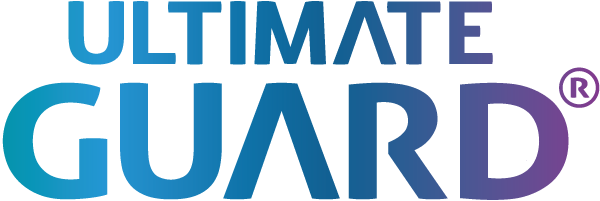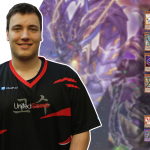Deckbuilding for the Three Types of Metagames

Success in Yu-Gi-Oh!, in my opinion, is 30% Deckbuilding, 30% Optimal Plays, 30% Ruling Knowledge, and 10% Psychology. However, if you do not anticipate the metagame of a tournament properly, you will fail to build the best deck and lose. In this article, I’m going to look at some basic fluffy deckbuilding theory that should be applied in preparation of Premier events.
Format after format, a strong grasp of the fundamentals of this game, just like understanding +/-s in card advantage, will serve you better than anything else. My intent is that you will walk away with a better understanding of how Premier events actually work and how to be successful in them when deckbuilding.
GOAL AND TARGETS
This should be pretty obvious – the goal of the competitive player entering a Premier event is to win to the event or at the very least, make an appearance in the Top Cut. In order to do that, you are going to need the best deck. Moreover, as most Premier events are now 11 Rounds + Top 32 tournaments, you’ll need that best deck to go 9-2 in the Swiss rounds to make the Top Cut.
SWISS STRUCTURE
There are three brackets you can potentially play up in Swiss: the X-0 Bracket, the X-1 Bracket, and the X-2 Bracket. There is also the possibly of being paired down with someone that is X-3 and doesn’t want to drop. The decks you will encounter in each bracket get more and more obscure as the number of losses increase. Moreover, deck strength does not usually level out the field until Round 5.
TOURNAMENT METAGAMES
Contemporary Yu-Gi-Oh! is very archetype centered, with the top decks being either a single archetype or a combination of more than one. The metagames you will encounter in Premier events are threefold. There is the (1) open metagame, the (2) high-barrier closed metagame, and the (3) low-barrier closed metagame.
Open Metagame
An open metagame is one with a wide selection of top contenders. The barriers to compete are low because the competitive card pool availability is high. You could argue against that, but the idea is that there are so many available decks, at least one must be affordable. An example of an event with an Open Metagame was YCS Bochum in 2010.
| DECK | SWISS | PLAYOFF | VARIANCE |
| X-SABER | 17.00% | 34.38% | +17.38% |
| BLACKWING | 10.00% | 25.00% | +15.00% |
| ANTI-META | 5.00% | 9.38% | +4.38% |
| GLADIATOR BEAST | 13.00% | 12.50% | -0.50% |
| PLANT | 10.00% | 3.13% | -6.88% |
| OTHER | 45.00% | 15.63% | -29.38% |
Closed Metagame (High Barrier)
A closed metagame with a high barrier is one where there is only one or two top deck(s), all of which are extremely expensive. As the top deck(s) are expensive, competitive cardpool availability is low, so the best deck(s) only has a tiny portion of the overall metagame. However, it will overpower all competitors and take up a large portion of playoff berths. An great example of closed metagame with a high barrier was YCS Leipzig in 2012.
| DECK | SWISS | PLAYOFF | VARIANCE |
| RABBIT | 14.14% | 59.38% | +45.24% |
| INZEKTOR | 11.57% | 18.75% | +7.18% |
| WIND-UP | 7.40% | 12.50% | +5.10% |
| GRAVEKEEPER | 2.75% | 3.13% | +0.38% |
| AGENT | 4.84% | 3.13% | -1.71% |
| PLANT | 4.93% | 3.13% | -1.81% |
| CHAOS | 2.85% | 0.00% | -2.85% |
| ANTI-META | 3.61% | 0.00% | -3.61% |
| SAMURAI | 4.27% | 0.00% | -4.27% |
| T.G. | 5.41% | 0.00% | -5.41% |
| DARK WORLD | 6.17% | 0.00% | -6.17% |
| OTHER | 32.07% | 0.00% | -32.07% |
Closed Metagame (Low Barrier)
A Closed Metagame with a low barrier of entry is one where there is only one or two top deck(s), all of which are readily available. This type of format is rarely ever seen, but a recent example of it was YCS Turin in 2013.
| DECK | SWISS | TOP CUT | VARIANCE |
| DRAGON RULER | 39.35% | 65.63% | +26.28% |
| EVILSWARM | 11.03% | 15.63% | +4.60% |
| BUJIN | 3.10% | 3.13% | +0.03% |
| SPELLBOOK | 4.31% | 3.13% | -1.19% |
| NOBLE KNIGHT | 1.36% | 0.00% | -1.36% |
| MERMAIL | 2.57% | 0.00% | -2.57% |
| FIRE FIST | 6.72% | 3.13% | -3.60% |
| CONSTELLAR | 3.78% | 0.00% | -3.78% |
| OTHER | 27.79% | 9.38% | -18.42% |
DECKBUILDING
In the neoclassical economic sense, competitive Yu-Gi-Oh! is not competitive at all. From above, we can derive that at the average event only approximately 15 per cent of competitors will play the best deck available. Under the most ideal conditions in contemporary Yu-Gi-Oh! history (i.e. the best deck has been on the market for a while plus was just reprinted in a tin), only approximately 40 per cent of players played the best deck.
Common Metagames
Let’s take a look at the most common two metagames you will encounter: the Open and High Barrier Closed. It doesn’t really matter which one we look at because in both, individual decks make up a similar percentage of the overall field. (Note: If the format is going to be a low barrier closed metagame, where you main your entire side deck, that should be really apparent heading into the event).
Now, if you want to tech out your deck or build your deck to stun the meta or to give you an edge in the mirror, then the math does not support taking this route:
- 3 Rounds * .15 of the Field = .45 < 1
- 5 Rounds * .15 of the Field = .75 < 1
These numbers mean you may not even encounter that best deck at all in the early rounds of the event, before deck strength narrows out the field. Instead, you will face something else where your “secret” techs or engine are dead or subpar to alternatives and you will lose because of it. The opportunity cost of those cards over universal floogates or more themed but most likely generic cards you could have used is too high. If you have not learned from decks like TeleDad or Dragon Ruler, each of your 40 (or 37 depending the school of thought you subscribe to) is too important to waste even one of. Moreover, once you lose the first round and end up playing up the X-1 or X-2 brackets with those cards, you might have just as well stayed home.
Open Metagame
This is especially true in the more open metagames, because they are a lot more rock-paper-scissors matchups. If you think your deck is indifferent to the rogue or suicide bomber builds in the early rounds, you’re wrong.
Closed Metagame (High Barrier)
In the closed metagame, your deck should just topple over everything else because of its power. However, from our earlier example of YCS Leipzig in 2012, this is not always true. In that event, both Agents and Dark World were very terrifying matchups for the Dino Rabbit deck inherently. The conservative approach would be to admit your deck is not going to be indifferent to the all non-top contenders in that field.
Conclusion
Essentially, what I am saying is that those cards that you think help you win the later tournament rounds are better off in your side deck or left at home. This is because they will cost you the tournament before you even get to play those matchups. As I mentioned from the outset, this is really fluffy stuff – although hopefully it helps that it is supported by math from actual events.
These finding should not be all that shocking. However, the reason I decided to share this which you today is because it is far too often overlooked. Time and time again I have seen so many adept players, even on this roster, lose because they ignored the basic composition of the metagame they were going into. Thus, they took the wrong deck or wrong build of the right archetype and lost because of it.
Immediate Implications
The takeaway point from this article is that heading into YCS Toronto and YCS Madrid, Shaddoll is being heralded as the deck to beat. However, I guarantee it will not make up more than 15-20% of the initial field of earlier of those events. This is because they’re new and somewhat expensive cards. As we learned from this article, the competitive card pool availability, at least for this deck, is low. Whether you are or aren’t playing Shaddoll for Toronto/Madrid, you will not be playing it every round, nor should you build your deck to play it every round.
ABOUT THE AUTHOR
Kyle Schrader was a member of United Gosus from 2010 to 2015, serving as the immediate Past-President and Past-Chairman.









You must be logged in to post a comment.